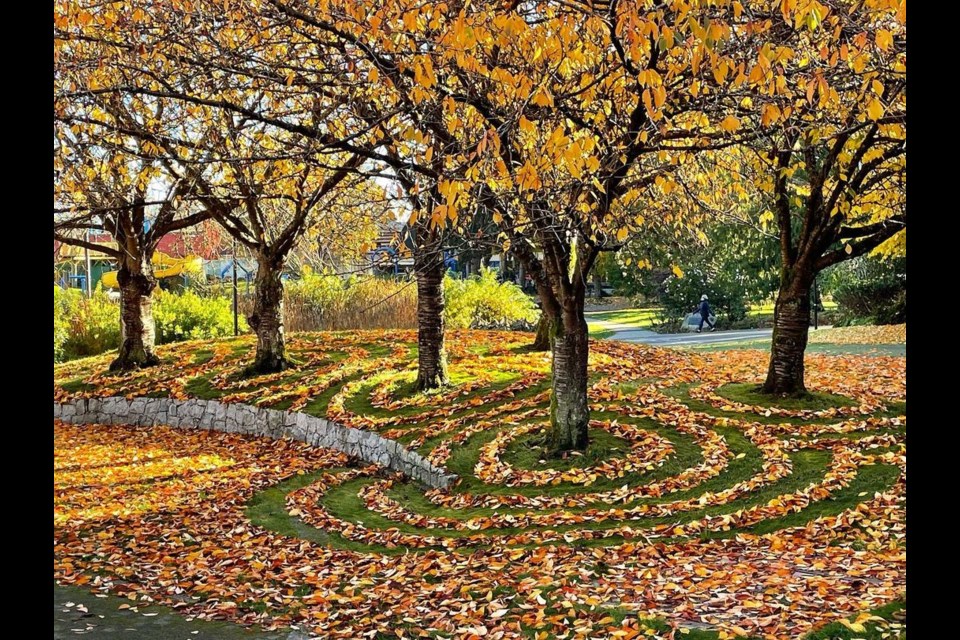It's not quite painting with all the colours of the wind, but the canvas is landscape, and the medium is very, very natural.
Nik Rust, a local designer, is behind some of the unique, intricate designs left in some of Vancouver's parks and public areas this past fall. Going by the handle @rakemob on Instagram, he raked leaves into simple but precise circles around the trees they fell from, creating patterns of concentric circles like ripples of water or sound waves emanating from deciduous trunks.
"The idea has been bouncing around in my head for at least a decade," he tells Vancouver Is Awesome. "Falls would come and go and wouldn't get to it."
But, like many people, the parks were the place to be with the pandemic in play in 2020, and he finally put rake to leaf and got to work.
"Everything was kind of different as far the day-to-day," he says. "Parks were being used in ways they never had before."
He goes out early to create his art, so as people head out at the start of their day the designs are already in place, having appeared as if out of nowhere. While the majority of people who see his art have no idea how it got there, some early risers do catch him.
"Tons of people come up and approach me," Rust says. "Some people are baffled, and want to know why it's happening, and some people super stoked."
The trees and leaves, he says, offered up the chance to be creative, like paint with no brush.
"I've always noticed these beautiful pools of leaves under trees before wind comes through," he says, "almost like a colour shadow of the tree. They invited some sort of design."
He was, in part, inspired by zen gardens and the patterns that are created in the little, stony landscapes. Another piece is the temporary nature of the designs.
"It's important that it's ephemeral," he says. "I'm a huge fan of ephemeral art, from seasonal things like sandcastles, snowmen, jack-o-lanterns."
The interaction of the creator with natural world as it's in flux is a big part of the leafy designs. By the time he's done a design it may already be getting destroyed a little, as the wind starts moving leaves about. Maybe it'll last a little longer; it depends on the environment.
He likes looking for a couple of essential things. One is a good viewing location, so that people can see the design properly. That either means the piece needs to be on a slope or there needs to be a vantage point for people to look down on the (essentially) 2D piece of work.
The other important factor is contrast. Raking up brown leaves on brown dirt doesn't make a very good design, but bright red on deep green grass catches eyes.
How many leaves are around is also important. Too many and he's making big lumps. Too small and it doesn't really work.
Typically he hits areas in English Bay, Stanley Park, and south of False Creek, so it might worth keeping an eye out in 11 months.
Someone’s very good with a rake or their hands at Sunset Beach 🍁 pic.twitter.com/HZBbOGAU5u
— Peter Meiszner 裴智勵/裴智励 (@PeterMeiszner) October 21, 2023
He's also considering leaving a rake at a site after he's started a design.
"Then I can come back later to see what became of it," he says. "So people can either choose to add to it or help maintain it."
- This story was originally published Nov. 14, 2021 and updated Oct. 23, 2023.




